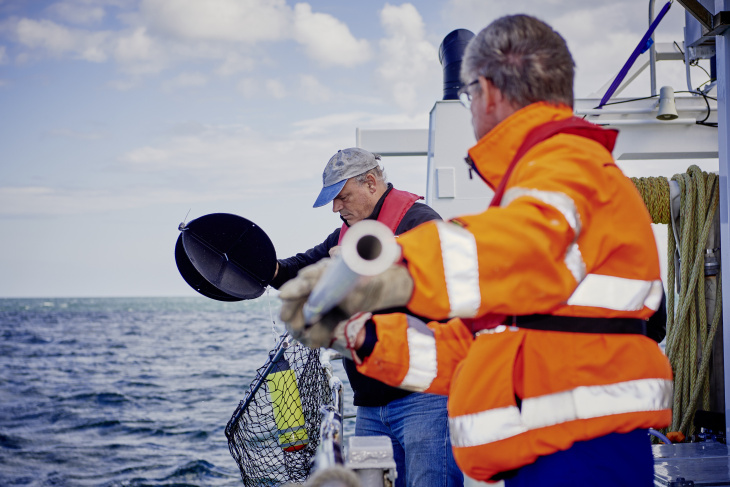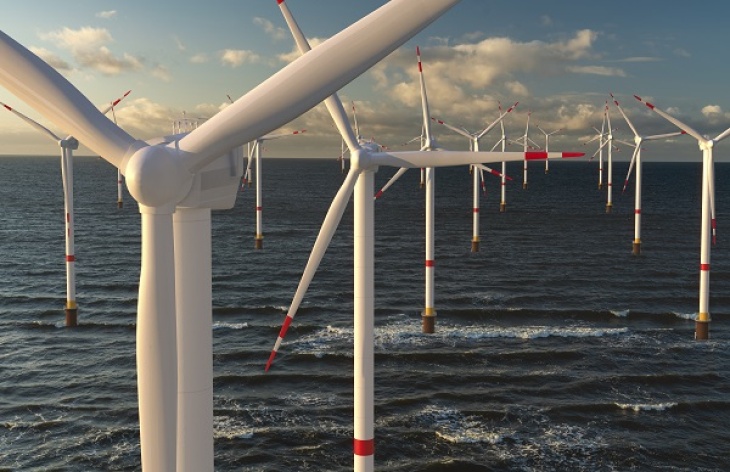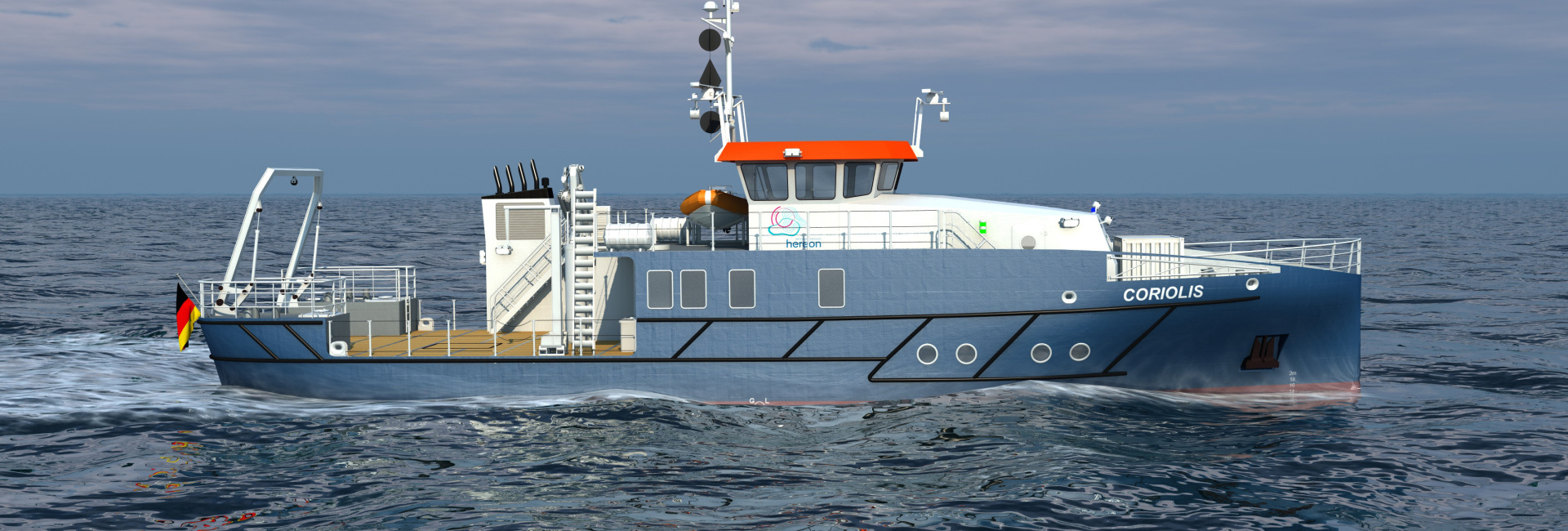Research aboard
The Coriolis will be deployable as a research vessel in versatile areas. Due to its compact size and shallow draft, it can easily navigate rivers, shallow water areas such as the Wadden Sea, but also deeper waters of the North Sea and Baltic Sea. The ship combines the expertise of the Helmholtz Zentrum Hereon in coastal, membrane and hydrogen research. Diverse and interdisciplinary research in these fields is thus also made possible on board.
There is also a laboratory on board for the fuel cells and the built-in metal hydride tank developed at Hereon. The laboratory is located in the bow area, near the propulsion system, to test the possibilities of the ship's hydrogen-based energy supply systems.

Photo: Hereon/Christian Schmid
With the combination of wet and e-lab, scientists on the Coriolis can take water and sediment samples and then analyse them for content and possible pollutants. In addition, measuring probes are used from the wet laboratory and a variety of physical measurements are carried out. The preparation of the measuring probes as well as the subsequent analysis of the measurement data obtained are analysed in the E-Laboratory. Buoys can also be deployed from on board the Coriolis, as well as ground-based measuring systems such as underwater nodes and landers.
The equipment of the wet laboratory includes a hydrographic shaft with which scientific instruments can be deployed directly from inside the ship to the keel line. In addition, the laboratory is equipped with ultra-pure seawater system for trace analysis. The built-in FerryBox can be registered online and continuously measures physical, chemical and biological parameters such as oxygen concentration, salinity, temperature or pH value - during the voyage and in port. Hydroacoustic systems for current measurement (echosounder and ADCP) are provided in the bottom of the ship.
Insights into current research

Foto: istock/ Mike Mareen
Offshore wind farms change marine ecosystems
The expansion of offshore wind farms in the North Sea is making progress. But the consequences for the marine environment they are built in have not yet been fully researched. Scientists at the Helmholtz-Zentrum Hereon have already provided valuable insights into the effects of wind farms in past studies. In their latest publication, they now show that large-scale wind farms can strongly influence marine primary production as well as the oxygen levels in and beyond the wind farm areas. Their results were published in the scientific journal Communications Earth & Environment.
Further information

Foto: Hereon/Sabine Billerbeck
Green hydrogen from offshore wind power
H2Mare is one of three hydrogen flagship projects, funded by the German Federal Ministry of Education and Research (BMBF) with a total of up to 740 million euros. In H2Mare, the production of green hydrogen and a range of different secondary products with offshore wind power, will be investigated together with around 32 partners from science and industry, over the four year lifetime of the project. With four of its institutes, the Helmholtz-Zentrum Hereon supports technology development for sustainable and environmentally friendly energy production and its conversion to secondary products.
Further information
